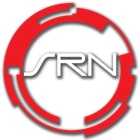Last week, I was informed that I had gotten the summer job for which I had applied for. Thinking ahead, I decided to start looking for reviews and rumors for a couple of laptops that had previously caught my eye. Sony’s “Ultimate Mobile PC” seemed to be the laptop innovator with many monumental implementations such as: an external dock with one USB 3.0 jack, HDMI, Ethernet, AMD Whistler discrete graphics, and a Blu-ray Disc reader and writer.
It’s widely speculated around the web that Sony’s “Ultimate Mobile PC” is set to integrate Thunderbolt into its USB 3.0 rather than going down the route Apple had taken using their Mini DisplayPort. So what is Thunderbolt?
- In simple terms Thunderbolt hopes to be the USB 2.0 of tomorrow, a port for devices that supports speeds of 10 gigabytes per second (simultaneously sending & receiving data). Being a completely new port Thunderbolt will support current HDMI, DVI and VGA outputs; however, other-than display devices there are no Thunderbolt devices on the market. Thunderbolt itself is strictly Intel developed, users will not find Thunderbolt ports on AMD chip-sets and any other CPU’s.
Intel had previously stated that they had been the sole holder of the trademark. However, seeing how Apple had collaborated with Intel to produce Thunderbolt, they were the company to file the initial trademark requests in Canada, China and the US.

The “Ultimate Mobile PC” has taken a liking to the name Sony VAIOs Thunderbolt; however, Dave Salvator told Engadget, “a Thunderbolt implementation needs to use the controller chip, and the Thunderbolt connector.” Meaning if Sony decides to continue down the route of using a USB 3.0 port with an adaptor for Thunderbolt rather than using a Mini DisplayPort, Sony will have to find a new name for its high-speed peripheral interface. This does not mean that Sony and other manufactures cannot use Thunderbolt, in fact, besides controller chip, the cable itself is based off of a PCI Express cable. The only difference is that they cannot call it Thunderbolt and if indeed they do call it something else, you can be assured that it will be compatible with other equipment labeled Thunderbolt.
Seeing how Apple has made the Mini DisplayPort royalty free (even though they own the patent, anybody can use it) and Thunderbolt uses the same cable, I’d suggest to Sony to use the MiniDisplay port, simply because of the fact it already supports most display devices (HDMI, VGA, DVI) as well as the fact is twice the speed of USB 3.0 with higher speeds to come in the future.

